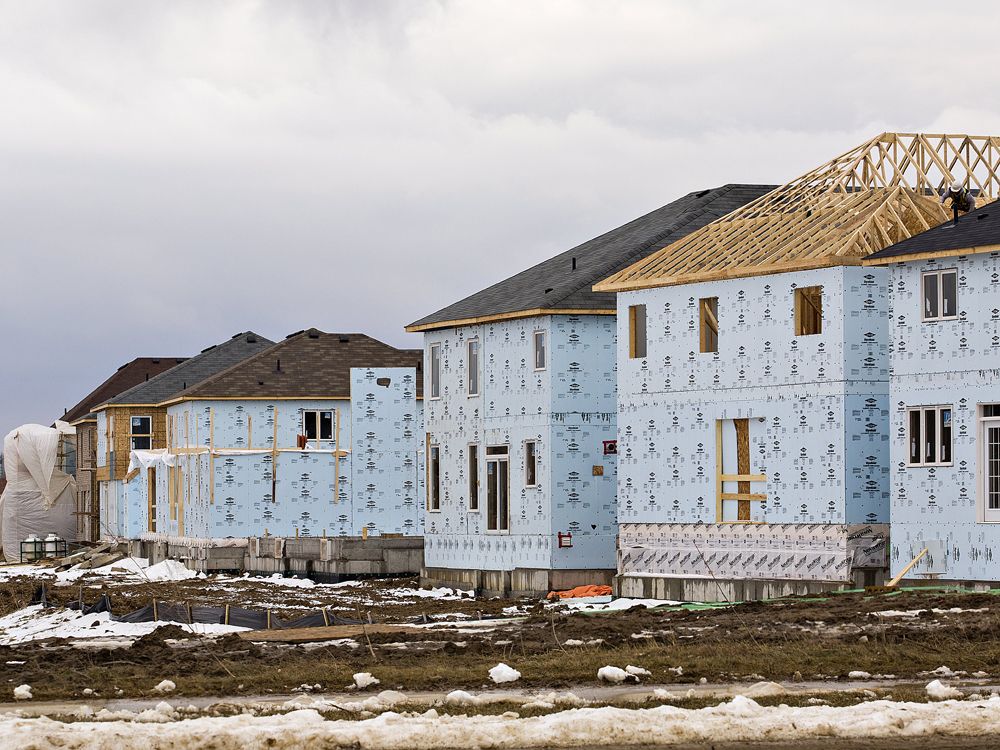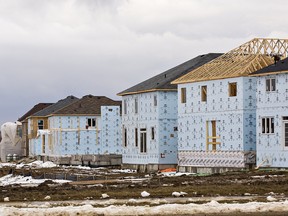
Inadequate housing supply is a primary contributor to unaffordable housing prices and rents

Article content
After decades of frustrating inaction, the Ontario government has a plan to quickly build many more homes by setting targets for new construction and proposing far-reaching changes to the governance structure necessary to implement the plan.
Advertisement 2
Article content
Despite the urgency to fix the supply shortfalls accumulated over the past five decades, the critics are out in full force in an effort to maintain the status quo of inadequate housing supply, which is a primary contributor to unaffordable housing prices and rents.
Article content
Ontario’s plan is not perfect — no plan ever is — but it finally provides a fighting chance of solving the province’s supply woes. The status quo of not building homes is, and never was, an option if the goal is for the people to have affordable housing.
The first of Ontario’s two important initiatives is Bill 23, also known as the More Homes Built Faster Act, 2022, which introduces a series of land-use planning changes to cut red tape and sets explicit, non-binding targets for large municipalities to construct new homes.
Advertisement 3
Article content
The other initiative is empowering the mayors of Toronto and Ottawa, the province’s most populous municipalities, to take decisive actions on housing developments without mustering support from a majority of councillors, who often vote to block new developments at the behest of their NIMBY (Not in My Backyard) constituents.
Those who oppose these plans are diverse, but they have a few traits in common. Many are supply skeptics, who pay lip service to the notion that we need more housing, but are unwilling to do much to achieve that goal.
Others are status quo champions who want to “preserve” the spirit of their neighbourhoods, a polite way of saying they want to keep new citizens out of their areas. Then there are the planners, some of whom were taught a Soviet-style central planning system where ad hoc limits are placed on what land can be developed and at what intensity. Most builders and developers fight for years to have these plans and bylaws amended, resulting in delays and inflated prices and rents.
Advertisement 4
Article content
Some believe that empowering mayors disenfranchises local representatives, which is hardly true. Local representatives are free to advocate for their constituents on all matters except blocking new housing construction.
Consider that Toronto Mayor John Tory received more votes from citizens than the sum of all votes received by the elected councillors. Shouldn’t the executive powers be weighted by the support each voting member of the council, including the mayor, received in the municipal election?
Premier Doug Ford ran on the promise to build more housing and voters overwhelmingly supported the Conservative platform by electing 83 of its candidates, more than twice the seats won by all the other parties combined.
Advertisement 5
Article content
If democracy is to be trusted, Ontario voters overwhelmingly endorsed plans for more housing in the provincial election held in June. Empowering NIMBY types and their enablers is hardly advocating for democracy.
-

Working from home is here to stay and that has consequences for both housing and office space
-

Ontario needs to overhaul its real estate regulator to safeguard the interests of homebuyers and sellers
-

Housing market shows signs of life, but it’s too soon to celebrate a recovery
But we do support a few suggestions forwarded by critics. For starters, we believe the plan to permit construction on 7,400 acres of the Greenbelt should be put on hold for further study. We understand the province will add 9,400 acres to the Greenbelt to compensate for the removed land, but we need to first understand why such a move might be necessary.
Advertisement 6
Article content
For starters, not every square foot of the Greenbelt’s two million acres is environmentally sensitive land. Toronto Sun columnist Brian Lilley identified several parcels that were not used for agriculture and, in some cases, are landlocked by development around them. Building on non-sensitive land already served by roads, sewers and pipes should not be solely opposed because it’s included in the Greenbelt.
Critics also argue development should first target already built areas, resulting in intensification. We could not agree more. However, NIMBYism defeats or delays any plans to intensify. That’s why we need additional powers for the mayors to act for the good of the city or province, even if it conflicts with the aspirations of status-quo-preserving locals.
Advertisement 7
Article content
We want to move even further and recommend building affordable, family-friendly housing before dedicating funds and resources to building larger, more expensive homes.
Land, labour and capital are scarce, even more so because of pandemic-driven disruptions. Focusing on family-friendly housing first, with a sizable chunk comprising purpose-built rental housing, can help Ontario achieve affordability targets sooner than waiting for trickle-down benefits that may take years, if not decades.
Murtaza Haider is a professor of real estate management and director of the Urban Analytics Institute at Toronto Metropolitan University. Stephen Moranis is a real estate industry veteran. They can be reached at the Haider-Moranis Bulletin website, www.hmbulletin.com.
